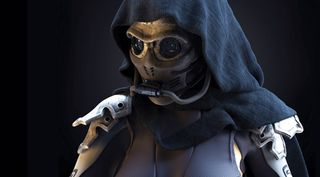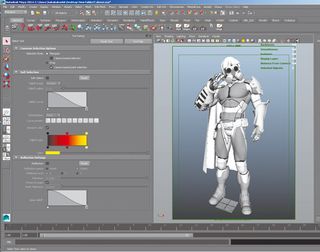Is CGI set to change comics forever?
Why Saizen Media’s forthcoming motion comic Slavers could be the title to change perceptions of the industry.

With their complex meta-narratives, alternate universes and rebirths and renewals, comics have traditionally been a niche passion. You may have enjoyed Thor: The Dark World, but did you get all the nuanced references?
The arrival of new technology and distribution methods has meant that comics are more accessible than ever, and with projects like Saizen Media's Slavers: The Day Our World Ended, they may never look the same again.
The new comic is being created by Saizen Media's Davide Bianca
and lead CG artist Andrea Mancuso. "The use of CG has completely revolutionised the workflow, pipeline and creative processes of comic book creation just as much as it has done in any other field," explains Bianca.
The use of CG has completely revolutionised the creative processes of comic book creation
The team brought all their skills in film, TV and game CG to bear on Slavers: "We wanted to employ all the advantages of using CG previz, pre-compositing and 3D and apply our collective knowhow to a motion comic just like in traditional CG movie making or key art creation, essentially erasing the difference between setting up a shot and creating a panel."

Comic book roots
The idea behind Slavers is to create a product with the visual aesthetic and quality of a feature film or next-gen video game, but with the storytelling roots of a comic book. The added advantage is Saizen can develop Slavers as a transmedia property, including toys, games and collectibles into the comic pipeline.
"Having all the assets in 3D has allowed us to repurpose animated shots for printed media, and use the very same characters for prototyping to create our original toy line. We are really trying to take advantage of the medium and at the same time maintain a cohesive and coherent Slavers universe in all of its declinations - animated, printed, maquettes and interactive content."

The team use ZBrush for modelling, Arnold for rendering and Photoshop for post-production, with the additional use of After Effects and Element 3D for animation and compositing. Krakatoa, FumeFX and Real Flow are also used for VFX. However, it is the adoption of Clo3d for cloth simulation that proved a real timesaver.
"Using Clo3D allows you to obtain, in very short amount of time, high-level details in your custom outfits without the overhead time of actual physics-based simulations; the natural wrinkles and folds in the fabric, and the total control in terms of actual design made Clo3D the ultimate solution for our needs," says Mancuso.
This article originally appeared in 3D World issue 181.

Thank you for reading 5 articles this month* Join now for unlimited access
Enjoy your first month for just £1 / $1 / €1
*Read 5 free articles per month without a subscription

Join now for unlimited access
Try first month for just £1 / $1 / €1
Get the Creative Bloq Newsletter
Daily design news, reviews, how-tos and more, as picked by the editors.
The Creative Bloq team is made up of a group of design fans, and has changed and evolved since Creative Bloq began back in 2012. The current website team consists of eight full-time members of staff: Editor Georgia Coggan, Deputy Editor Rosie Hilder, Ecommerce Editor Beren Neale, Senior News Editor Daniel Piper, Editor, Digital Art and 3D Ian Dean, Tech Reviews Editor Erlingur Einarsson, Ecommerce Writer Beth Nicholls and Staff Writer Natalie Fear, as well as a roster of freelancers from around the world. The ImagineFX magazine team also pitch in, ensuring that content from leading digital art publication ImagineFX is represented on Creative Bloq.
